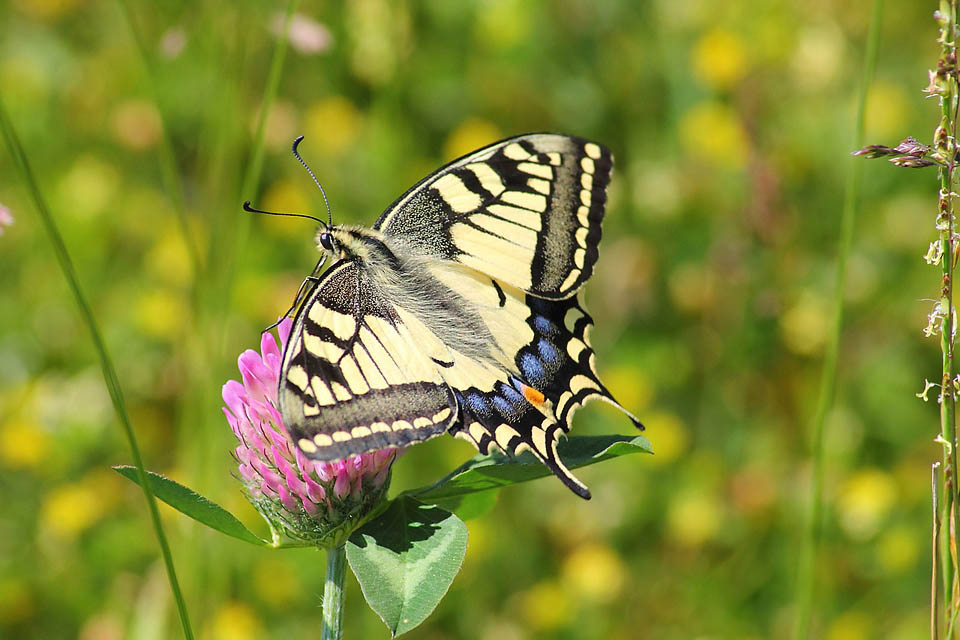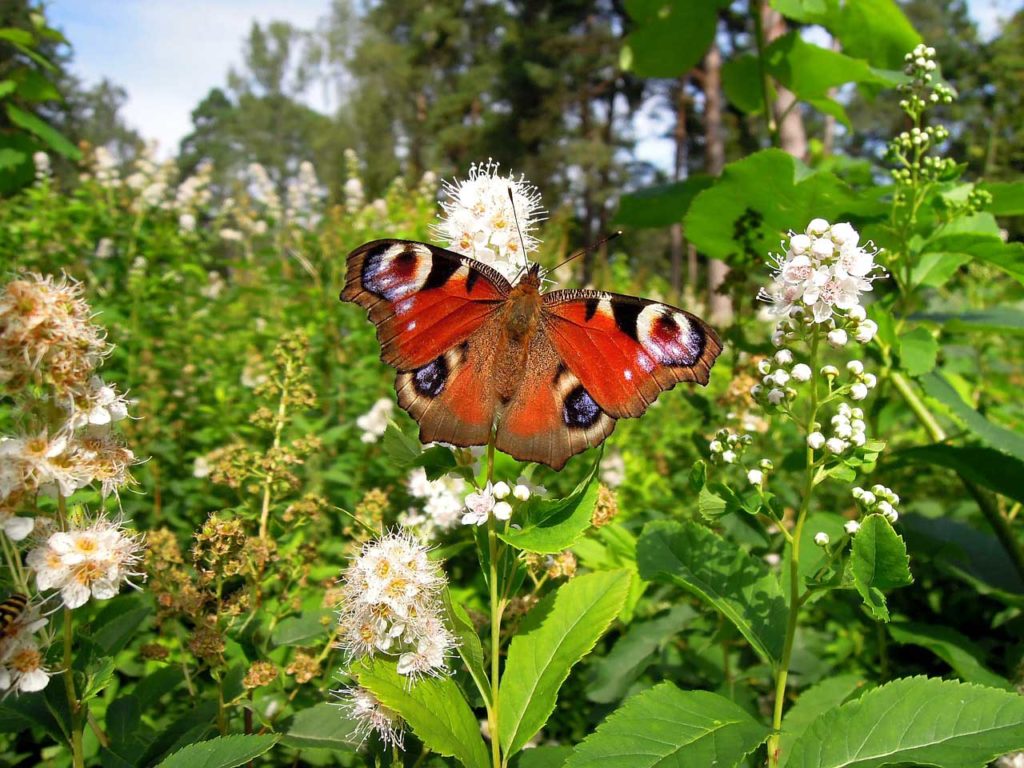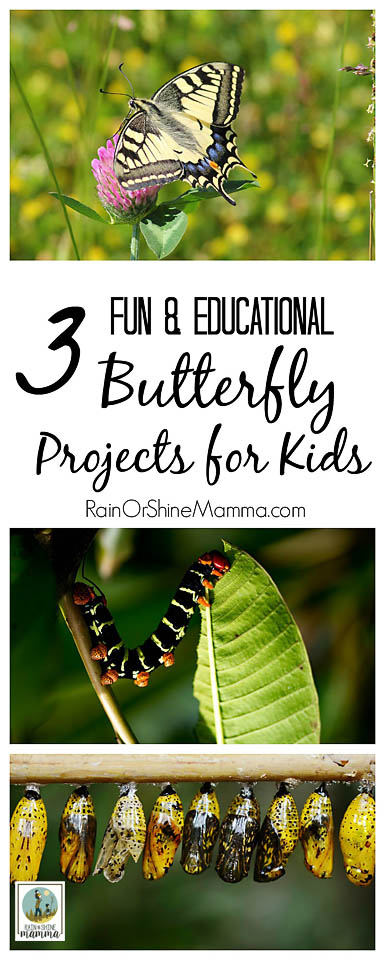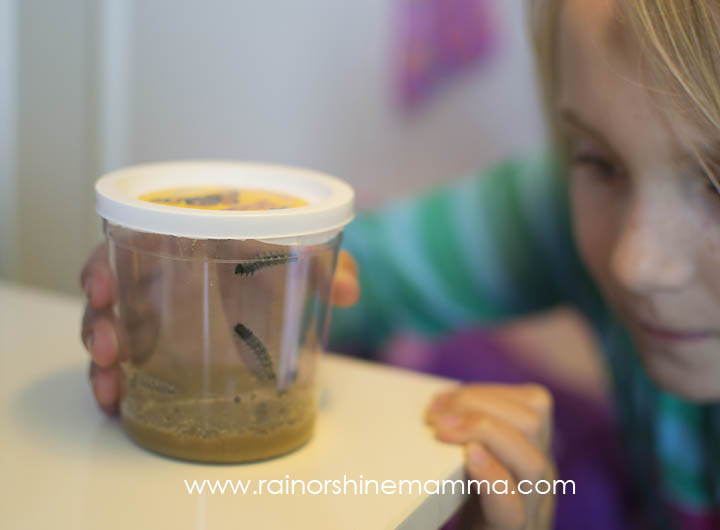Butterflies have an amazing way of capturing children’s imagination. Why not tap into that innate curiosity to encourage a nature connection? These three butterfly projects for kids benefit critters and child alike!

Three Unique Butterfly Projects for Kids
1. Raise your own butterflies
This is by far our favorite way to study and learn about butterflies! Raising your own butterflies lets your kids get a close-up view of the metamorphosis and is pretty much guaranteed to make your them develop a whole new appreciation for the butterfly life cycle. It can also instill in them a sense of environmental stewardship, as this project helps boost the local butterfly population in a small way. The first time we ordered a butterfly kit, my girls were completely transfixed by the process and didn’t want to leave the little critters out of their sight. Since then, raising butterflies has become somewhat of a spring family tradition.
Buying butterfly kits online is easy if you live in the contiguous 48 states. If this is your first time raising butterflies, I highly recommend Insect Lore Original Butterfly Garden with Live Caterpillars, which is what we’ve used in the past. It includes a collapsible mesh habitat, a feeding pipette and five Painted Lady caterpillars. Once the first batch of butterflies has been released, you can order refills of the caterpillars and reuse the habitat. If you want to give away a butterfly kit as a birthday present or Christmas present, you can also choose the Insect Lore Butterfly Garden with Voucher. This set includes the habitat, the pipette and a voucher for the caterpillars, which you send in when the weather is warm enough to release butterflies.
2. Plant a butterfly garden
The best way to attract butterflies is to make sure your garden meets the needs of all the life stages of the butterfly. That includes places to lay eggs, food plants for the larvae (caterpillars), places to form chrysalises and nectar sources for adult butterflies. The National Wildlife Federation offers these tips and more for budding butterfly gardeners:
- Plant native plants that caterpillars and butterflies feed on. (NWF has a list here)
- Plant a variety of color; butterflies are particularly attracted to red, yellow, orange, pink and purple flowers
- Plant nectar-rich flowers in the sun, where butterflies prefer to feed
- Provide places for the butterflies to rest (like flat rocks) and places for them to “puddle” in moist sand
- Don’t use pesticides in your garden

Many efforts to help butterflies focus on the Monarch, since this species has declined dramatically in recent years. NWF offers a free Butterfly Garden Starter Kit to anybody who pledges to help the Monarchs recover. All you have to do is upload a photo of you doing the sign language symbol for butterfly!
The kit includes:
- A seed packet with native milkweed or a flowering nectar plant
- A list of milkweed and nectar plants native to your region,
- A Ranger Rick Nature Notebook, and
- Butterfly Heroes sticker and poster.
Monarchs drink nectar from flowers and their caterpillars eat only milkweed. You can buy milkweed seeds from Save Our Monarchs, a grassroots organization that specifically focuses on planting milkweed.
3. Be a citizen scientist
To get data on butterfly migration, breeding trends and population size, scientists rely on reports from regular people like you and me. There are many ways for children to participate in these so-called citizen scientist programs as well. For example, you can get some friends together and organize a one-day butterfly count through the North American Butterfly Association. During a count, participants make a record of all butterflies observed at sites within a 15-mile diameter count circle in a one-day period. In addition to the one-day counts, the NABA website lets you report recent butterfly sightings or keep a personal check list of all the species you’ve seen. If you’re particularly interested in the Monarch butterfly, the Monarch Joint Venture lists several citizen science opportunities that help track this species.
If I had to pick just one of these activities, I would start with the butterfly kit, since it’s such an easy way to get younger kids involved with butterflies, regardless of where you live. Planting a butterfly garden is great fun if you have a yard, and is doable for kids of all ages, whereas the citizen science projects are perfect learning experiences for an older child who wants to dig in deeper.
Have fun!




Thank you so much for sharing. I’m glad you enjoyed it. And this is a great post. We need to help those butterflies! We have our milkweed all ready to go.
Not a problem:o) We’re still waiting for our seeds to show up. In the meantime we’re having a great time with the caterpillars!
I always find your posts so useful…Thanks Linda!
Thank you, Salma, for reading! It means a lot to me.
We have a patch of Coombe Mill where I always spot butterflies, so pretty.
I love to see them around the flower beds, and the kids are always fascinated by them!
We love butterflies and I think my little girl would be fascinated to raise her own from caterpillars, I didn’t know there were kits for that. I’ll definitely be checking that out, thank you!
They’ve been a huge hit here so far – right now the suspense is growing as we’re taking bets on how many days it’ll be before the caterpillars start making their chrysalis. This is our first go at it but I highly recommend it!